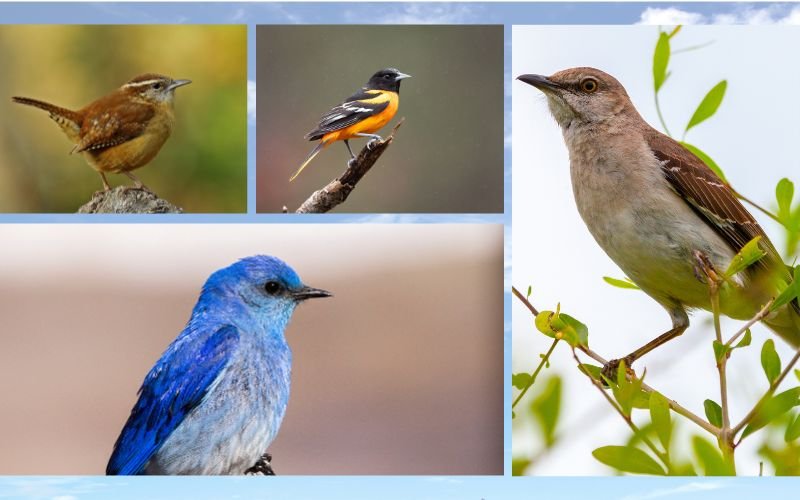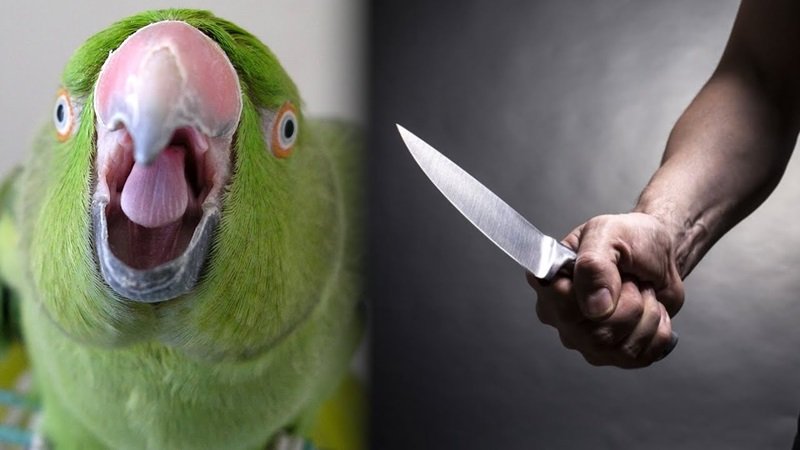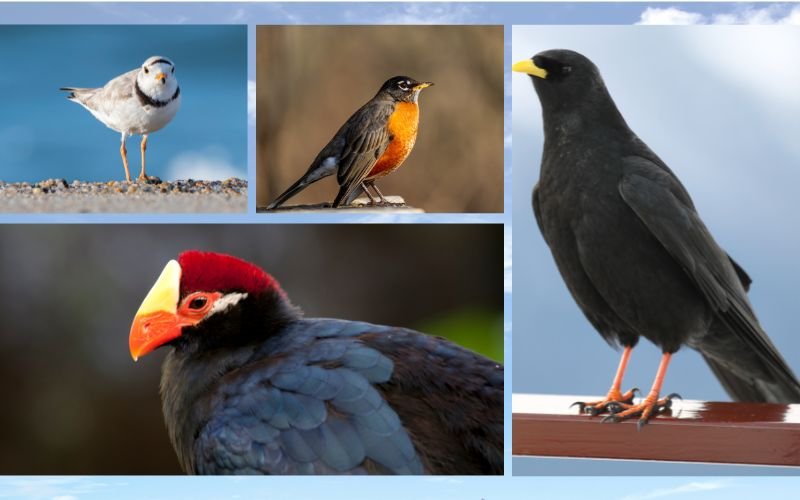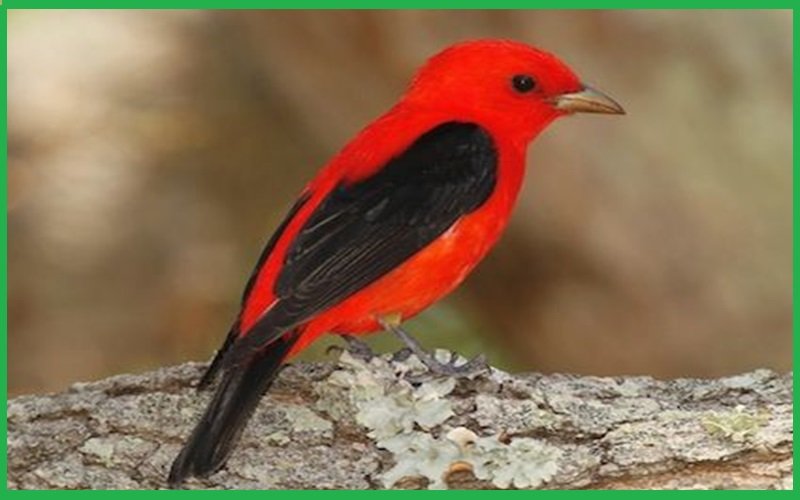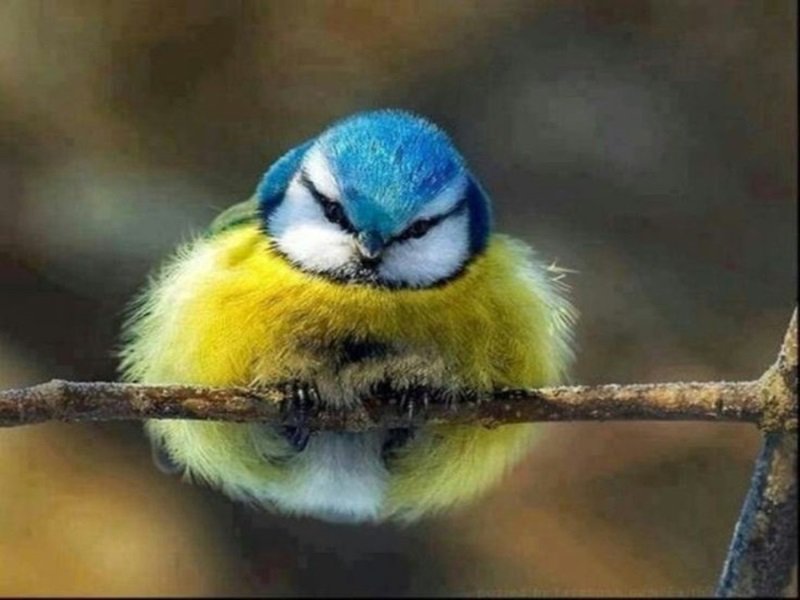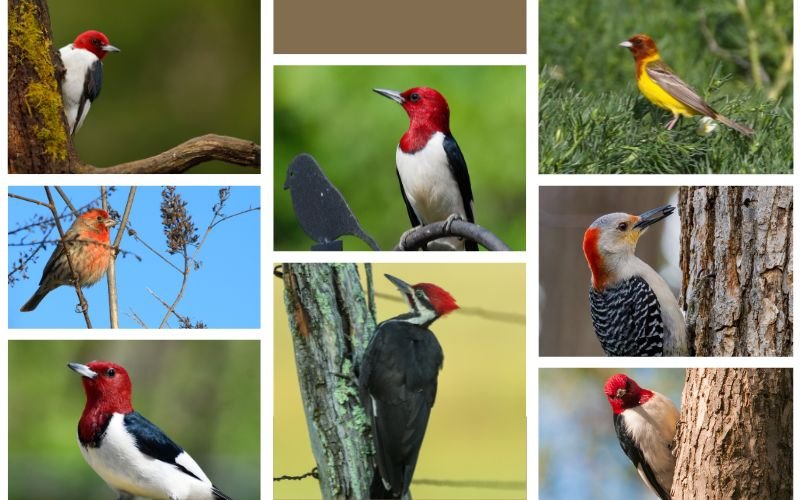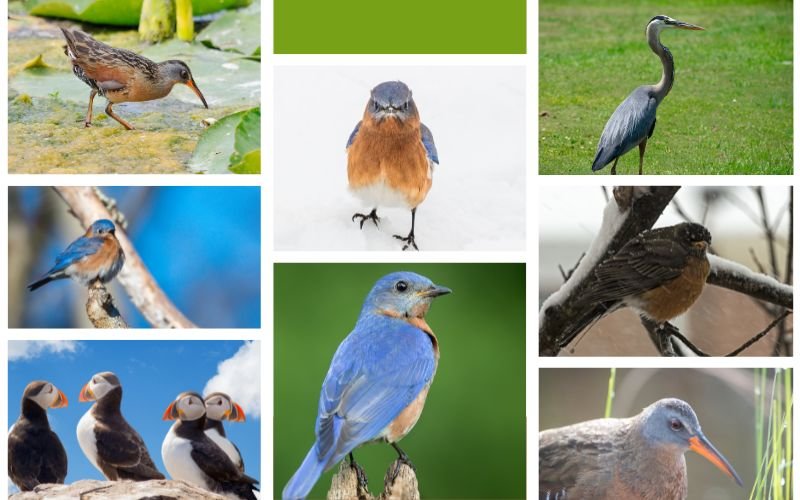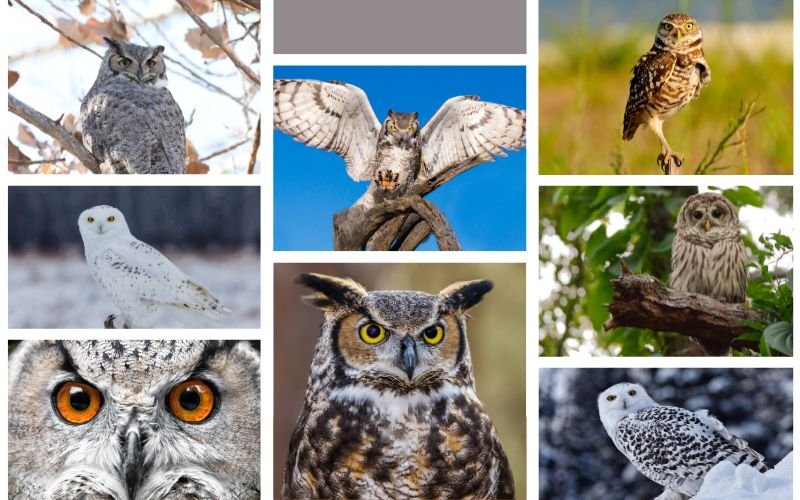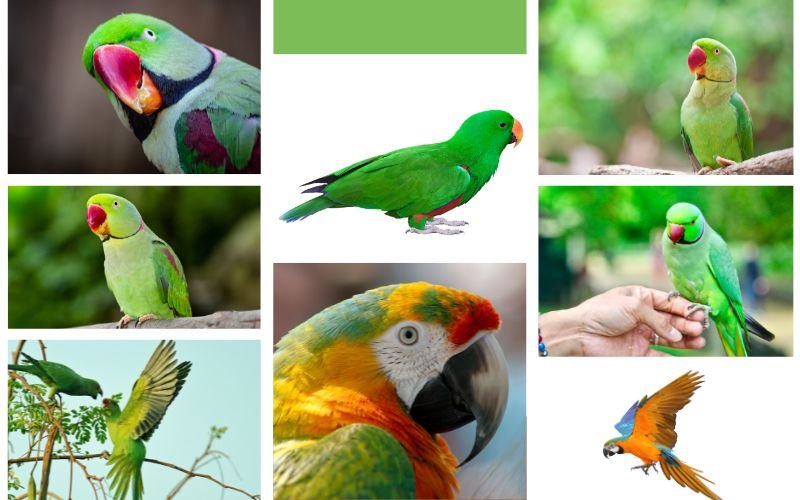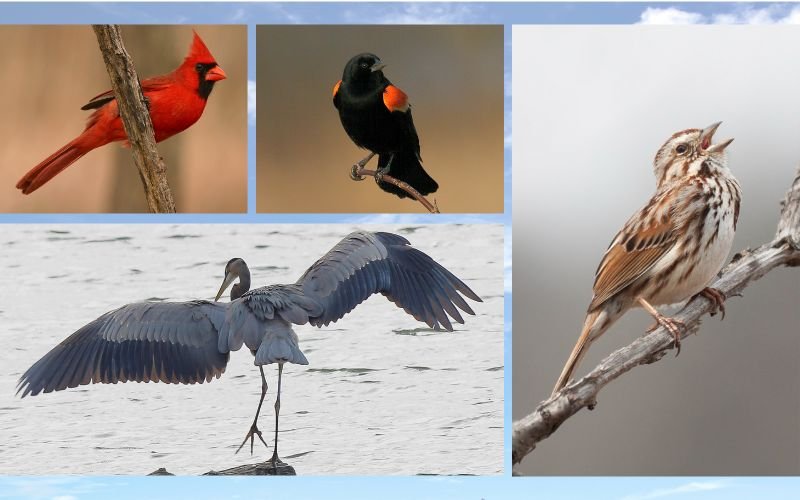Long Island has a high population density in Southeastern New York state. It has played a vital role in the bird’s ecosystem balance by controlling the insect population, dispersing seeds, and pollinating plants.
From ancient times to the present, this long island of New York state has been home to over 200 different avian species. It is famous for both migration and breeding and also for bird residence.
This article will discuss 25 beautiful Long Island, New York state birds, along with their scientific names, sizes, native places, wingspans, lifespans, food, and other facts about them.
So, let’s delve into the Long Island birds.
25 Beautiful Birds of Long Island (New York)
Long Island has been playing a significant role by balancing the ecosystems of the avian species through nature.
Because of its immense richness and sources, it has become one of the most common and popular places for birds to visit.
This section will discuss the top 25 birds of Long Island, including their scientific names, sizes, native places, lifespans, wingspans, diets, and other attributes like physical characteristics, behavior, distribution, habitats, and so on.
1. Northern Cardinal
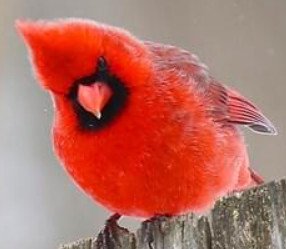
- Scientific name: Cardinalis cardinalis
- Lifespan: around 15 years
- Wingspan: 25–31 cm (9.8–12.2 in)
- Native to: Southeastern Canada, Eastern United States
- Size: around 21 to 23 cm
- Food or Diet: seeds, grains, fruits, snails, oats, grasshoppers, etc.
Northern cardinals, red birds or common cardinals, are spotted in the Long Islands of New York City.
Besides, these northern cardinals are widely distributed throughout the United States, including Florida, Canada, New Mexico, Texas, Guatemala, and Bermuda.
Their whole body is covered with red plumage with a red crest on the top head. Their face is black around the eyes and nose area, and they have bright red beaks.
These species prefer open wooded areas, wetlands, parks, and brushy fields for their habitats, including the Long Island of New York. These Northern cardinals make their pairs for several years until the partner’s death.
Female birds build their nests with twigs, strips, grasses, or plant fibers. Female cardinals usually lay 3 to 4 eggs in the nests and female cardinals incubate those eggs for 12 to 13 days.
2. Tufted Titmouse

- Scientific name: Baeolophus bicolor
- Lifespan: around 2.1 years
- Wingspan: 20 to 26 cm
- Native to: North America
- Size: 14-16 cm
- Food or diet: insects, other birds eggs, and seeds
Tufted Titmouse birds are small birds with grayish upper body parts, crests, and white bellies. These Titmouse birds are also seen in the Long Island of New York City, including the United States, Ohio, Mississippi River, and Canada.
They are also fond of mixed wooded areas, gardens, and parks for their habitats. They don’t build their nests but prefer tree holes, natural cavities, or man-made structures for their nesting.
These Titmouse birds line the nests with soft materials. Female birds lay creamy-colored eggs and incubate them for 12 to 14 days. The young leave the nests after 15 to 16 days of hatching.
These young birds remain with their parents during the winter seasons, and later, they leave the nests.
3. Black Capped Chickadee
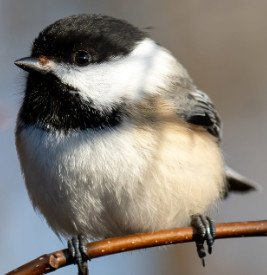
- Scientific name: Poecile atricapillus
- Lifespan: less than 2 to 3 years
- Wingspan: around 64 to 68 cm
- Native to: North America, Northern United States, Canada
- Size: 12 to 15 cm
- Food or Diet: seeds, berries, bark, dead leaves, insects, etc.
Blacked-capped Chickadee birds are small songbirds related to the passerine family. These birds have black patches over their head and grayish-blue plumage on the upper parts of the body, including their wings.
Their lower body parts are white, and their bills, eyes, and legs are black. These birds are highly spotted in the United States, Canada, and North America, including Long Island.
These long island’s birds these birds create flocks or colonies and roam with these flocks during winter seasons.
These species can fly at about 20 km/h speed with their wings in a flight position over the long island’s surface level. They also build their nests in a tree about 1.7 m above ground.
4. Blue Jay
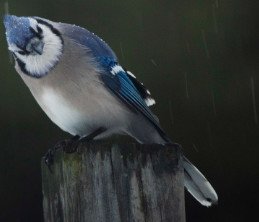
- Scientific name: Cyanocitta cristata
- Lifespan: average 7 years
- Wingspan: 13 to 17 inches
- Native to: North America
- Size: 22 to 30 cm
- Food or Diet: corn, grains, seeds, nuts, fruits, and insects
Blue Jay birds are also spotted on the long islands in New York and North America, including southern Canada, the United States, Florida, and Texas.
Their upper bodies are blue, with a black pattern on the wings and tails. They have black chains around their necks, a white face, and white breasts.
They are fond of arid pine forests and scrub areas for their habitats. These species are mostly noisy and aggressive birds while protecting their nests and territories.
If they see any predators or intruders, they will start screaming to divert their attention from them. Their mating season starts around mid-March and April.
They build their nests 10 to 33 feet above the ground. They are very picky about selecting their nesting sites, mostly preferring rural or heavily deforested areas.
5. Eastern Bluebird
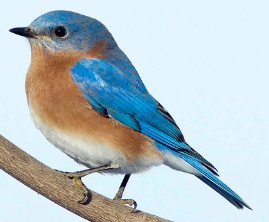
- Scientific name: Sialia sialis
- Lifespan: 6 to 10 years
- Wingspan: 9.8 to 12.6 inches
- Native to: North America
- Size: 16 to 21 cm
- Food or Diet: insects, invertebrates, fruits, berries, beetles, earthworms etc.
Eastern bluebirds are small birds mostly familiar with North America, including the long islands of New York, Canada, the Gulf states, and Arizona.
These birds’ upper bodies are bright blue, their breasts are orange, and their belly is slightly white. These species prefer open areas, frequently burned pine savannas, Long islands, and open wood for their habitats.
Eastern bluebirds are very social birds and stay in large flocks of hundreds of birds. They also protect their territories throughout their breeding season.
After breeding seasons, both males and females raise their young and care for them together by sharing their responsibilities.
However, females build the nests within 10 days and incubate the eggs for about 13 to 16 days. The young leave their nests within 15 to 20 days after hatching.
6. Song Sparrow
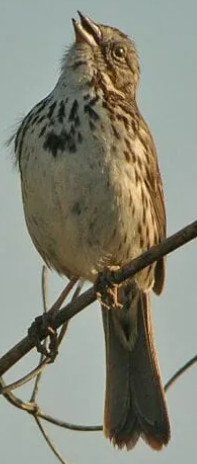
- Scientific name: Melospiza melodia
- Lifespan: around 11.3 years
- Wingspan: 18 to 25.4 cm
- Native to: North America
- Size: 11 to 18 cm
- Food or Diet: insects, invertebrates, seeds and fruits
Song sparrow birds are medium-sized birds related to the New World sparrow birds group of passerine birds. These birds have brown plumage with white spots over their body.
They also have long tails with brown caps. These song sparrows are native to North America, including the United States, Canada, and Long Island, New York.
These long island birds prefer marshes, salt marshes, shrubs, agricultural fields, and roadsides for their habitats. They are considered one of the most adaptable and abundant species worldwide.
Song sparrows forage on the grounds of a long island in shrubs and very shallow water. They make their nests on trees, near the ground, or in shrub areas.
Besides, these shrubs, which cover their territories, help them survive in winter and hide their nests from predators, harsh weather, and the environment.
This also helps them to reproduce successfully.
7. American Robin
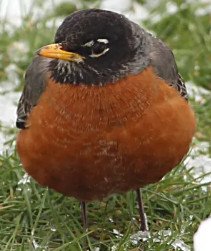
- Scientific name: Turdus migratorius
- Lifespan: average 2 years
- Wingspan: 31 to 41 cm
- Native to: Europe, North America
- Size: 23-28 cm
- Food or Diet: insects: earthworms, beetles, grubs, caterpillars grasses, and fruits
American birds are average-sized birds with brown wings, blackheads, orange chests, or breasts with yellow beaks.
These spices breed mostly in North America, from Alaska, Canada, Florida, and Mexico to Long Island, New York. Like their native places, they prefer open lands, woodlands, urban areas, and open farmlands for their habitats in the Long Islands.
They create a flock and stay with it. However, their flocks might break while they are providing food to their ants, etc. These Long Island American robins generally become active during the day.
These birds also sing with other thrush birds. Their song duration mostly starts in late February or early March to the end of July or early August.
8. European Starling
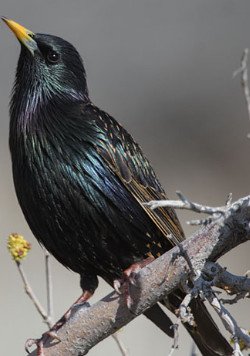
- Scientific name: Sturnus vulgaris
- Lifespan: around 2 to 3 years
- Wingspan: 31 to 44 cm
- Native to: Eurasia
- Size: 19 cm to 23 cm
- Food or Diet: arthropods, spiders, crane flies, moths, mayflies, dragonflies, grasshoppers, earwigs, etc.
The European starling birds, also known as the common starling, is a medium-sized noisy songbird of Long Island in New York City.
They have a glossy metallic sheen body, yellow beaks, and pink legs. These birds are native to Eurasia, including Europe, Northern Africa, India, Nepal, the Middle East, the Long Island of New York, and northwestern China.
These species of Long Island mostly prefer urban or suburban areas, areas where artificially structured trees are presented with a nesting hole or proper equipment.
Males find suitable places for nesting and start singing to attract females. They even decorate their nests with ornaments like flowers and fresh green materials.
Female birds of Long Island lay 4 to 5 eggs daily and incubate them for 13 days. Both parents share parental responsibility equally.
9. American Goldfinch
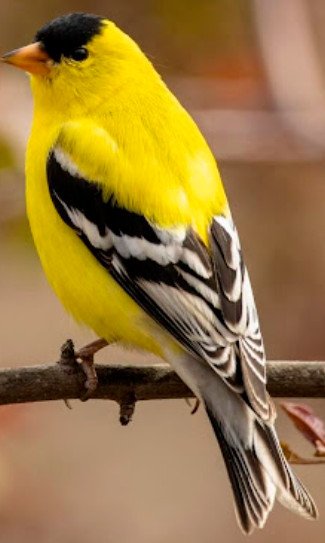
- Scientific name: Spinus tristis
- Lifespan: 3 to 6 years
- Wingspan: about 19–22 cm (7.5–8.7 in)
- Native to: North America
- Size: 1–14 centimeters (4.3–5.5 in)
- Food or Diet: seeds, weeds, grasses, buds, berries, flowers like dandelion, cosmos, goatsbeard, sunflower
American Goldfinches are small birds related to the Finch family, mostly spotted in the Long Islands of New York City. Their bodies are yellow, and their foreheads and wings are black.
They have small pinkish beaks that later change into orange during their molting process. These long island birds are also native to North America, including Alberta, North Carolina, Canada, and the United States.
They also prefer open country, such as fields, floodplains, roadsides, woodlands, orchards, and gardens, for their habitats.
They inhabit mostly in the spring and migrate during the autumn. These birds make some defense calls to avoid and sense their predators from their nesting sites.
When males find their mates, they select their nesting sites; later, female goldfinches build a nest up to 33 feet above ground level.
10. Dark-Eyed Junco
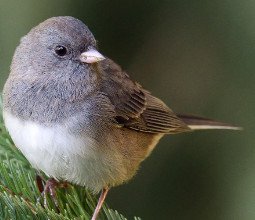
- Scientific name: Junco hyemalis
- Lifespan: 3 to 11 years
- Wingspan: 18 -25 cm
- Native to: North America
- Size: around 13 to 17.5 cm
- Food or Diet: mostly seeds and insects
Dark-eyed juncobirds are also common birds on Long Island. This dark-eyed junco bird belongs to the white Cardinal group.
These long island birds have grayish-brown backs, wings, and grayish lower parts on their chests and feathers.
They have black eyes, bills, and legs. These long island species are also familiar throughout North America, including coniferous or mixed forest areas for their inhabitants.
During winter, they form groups or flocks with several different subspecies and travel with them. Female birds have male cup-shaped nests on the ground with grasses and hairs and lay eggs there.
They incubate the eggs for about 12 to 13 days. Later, the young birds leave the nests between 11-14 days after hatching.
11. Gray Catbird
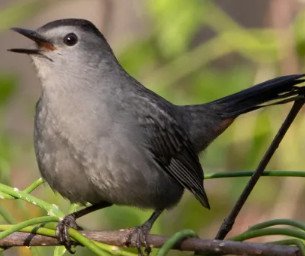
- Scientific name: Dumetella carolinensis
- Lifespan: 2.5 years
- Wingspan: 22- 30 cm
- Native to: North America
- Size: 20.5 – 24 cm
- Food or Diet: Mostly insects and berries
Gray catbirds are the most common birds on the Long Islands of New York City. These long island birds have grayish plumage over their body with little dark gray on the top of their heads.
These long-island birds are also native to North America, the Rocky Mountains, the United States, Mexico, and Central America.
Similarly, these birds prefer pine woodlands, coniferous forests, dense vegetation, farmlands, and overgrown and abandoned orchards for their habitats.
These island birds prefer semi-open areas, dense areas, low growth, suburban, urban, and rural habitats for their breeding seasons.
Female Long Island birds built bulky-shaped nests and set the nests very close to the ground. Later, the female birds lay 2 to 3 light blue color eggs.
12. House Finch
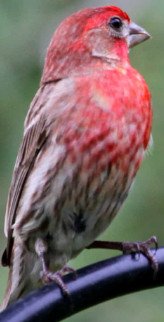
- Scientific name: Haemorhous Mexacanus
- Lifespan: around 11 years
- Wingspan : 8 – 10 inches
- Native to: North America
- Size: 12 to 15 cm
- Food or Diet: seeds, buds, fruits, plants, etc.
House Finches are small birds that are also spotted on Long Island. Male Long Island finches have nut-brownish bodies with a red patch on their faces and chins.
Female birds have brownish bodies with white spots. Apart from Long Island, these house finch birds are familiar in North America, including New York, Mexico, the southwestern United States, and Canada.
These species tend to have semi-open, urban, and suburban places for their habitats. Long Island house finches make their nests in cavities; sometimes, they even use a nest abandoned by other birds.
Female birds build their nest about 1.8 to 2.7 meters above the ground. Female finches lay 2 to 6 eggs and incubate for 12 to 14 days until the eggs hatch.
13. Red-Winged Blackbird
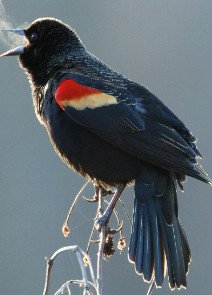
- Scientific name: Agelaius phoeniceus
- Lifespan: around 2.14 years
- Wingspan: 31 to 40 cm
- Native to: North America
- Size: 22 to 24 cm
- Food or Diet: fruits, berries, ants, spiders, snails, grasshoppers, caterpillars etc.
Red-winged blackbirds are also common birds in New York’s Long Island. These birds have black plumage on their whole bodies and red lines on their wings.
These long island birds are also local in Alaska, Florida, Mexico, Guatemala, and Costa Rica regions. These birds of Long Island molt their feathers once a year.
The red-winged blackbird’s molting season usually begins in late August to early September. During their breeding season, these birds are highly territorial.
They also prefer perching from high places like trees, bushes, telephone lines and fences as well. In the early spring season, male Long Island birds form a flock and stay with them.
During these days, they rarely visit their breeding sites except in the morning and late afternoon.
14. Downy Woodpecker
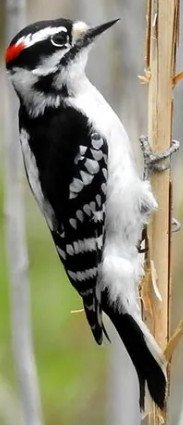
- Scientific name: Dryobates pubescens
- Lifespan: around 1 to 2 years
- Wingspan: around 10 to 12 inches
- Native to: North America
- Size: around 14 to 18 cm
- Food or Diet: sunflower seeds, berries, millet, peanuts, and chunky peanut butter
Downy woodpeckers are also related to the woodpecker family and are widely distributed in North America’s New York City, including Long Island.
They are also local to the United States, Canada, the Southwest, and the Northern tundra. The adult Long Island male birds have black and white plumage over their bodies with a little red patch on the head.
These birds primarily choose forests for their habitats. Female birds make nests in tree cavities. These birds again resemble hairy woodpeckers, however their beaks, and the pattern of the black spots these two birds can be differentiated.
These Long Island woodpecker species use a couple of vocalization sounds, including pik call. They can also produce drumming sounds with its beak.
However, their drumming sounds are comparatively slower than the North American species.
15. Red Bellied Woodpecker
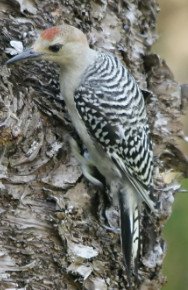
- Scientific name: Melanerpes carolinus
- Lifespan: around 12 years
- Native to: Eastern United States including Florida and Canada
- Size: 22.85 to 26.7 cm
- Food or Diet: Beetles, centipedes, spiders, fruits, and other insects
The Red-Bellied woodpeckers are a medium size woodpeckers from Long Island in New York City. Besides, these birds are also familiar in the eastern United States, including South Florida and North Canada.
These island birds are noisy and make lots of chur-chur-chur sounds, which shows they are trying to call other groups or pairs to communicate.
Sometimes, they tap on hollow trees or aluminum roofs to make a sound. These long island woodpeckers can catch their prey or insects in flight positions.
They prefer dead or dry wood for their nesting purposes. Male long birds of New York always seek the permission of their mates and tap their nesting holes mutually.
16. White Breasted Nuthatch
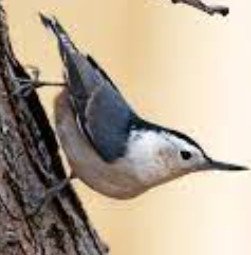
- Scientific name: Sitta carolinensis
- Lifespan: around 2 years
- Native to: North America
- Size: about 15.5 cm
- Food or Diet: insects, nuts, seeds, sunflower seeds, etc.
White-breasted nuthatches are small to medium-sized birds widely distributed across New York City’s long islands.
Besides these island birds are also distributed in North America, including Florida, Mexico, and Canada. These species prefer woodlands, open areas, and savanna lands for their nesting and habitats.
They are nonmigratory birds, meaning they do not travel long distances during their breeding or migration seasons. They like to stay in one region and defend their territory from their birds and intruders.
These long island birds stay in large flocks, which helps them avoid direct eye contact with predators. These birds mostly eat what they find in the ground. Their diet also includes nuts, sunflower seeds, and insects such as ants, beetles, caterpillars, and grasshoppers.
18. Osprey
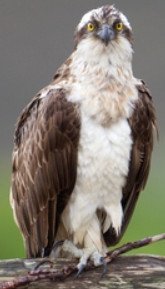
- Scientific name: Pandion haliaetus
- Lifespan: 7- 10 years
- Wingspan: 127–180 cm (50–71 in)
- Native to: north america, gulf coast, Florida, Alaska; except Antarctica
- Size: 50–66 cm (20–26 in)
- Food or Diet: prime food: fish; also eat rodents, frogs, birds, hares, rabbits, mammals, snakes etc.
Osprey hawks, also known as sea hawks, river hawks, or fish hawks, are commonly spotted on Long Island, New York City. Their lower parts are deep, glossy brown with white breasts.
Their heads are white, and they have a dark brown patch across the eyes. Island osprey hawks are mostly common in tropical regions such as North America, Alaska, Newfoundland, the Gulf Coast, Florida, and Finland.
These hawks are mostly common in every region except Antarctica. They build their nests near watery places, which are their best habitats.
These long-island osprey hawks made their nests with large heap sticks, driftwood, turf, tree forks, rocky outcrops, etc. These osprey birds generally choose their mate for their whole lives, which means they like to be with their one partner for their whole lives until and unless their partner is dead.
19. Brown Thrasher
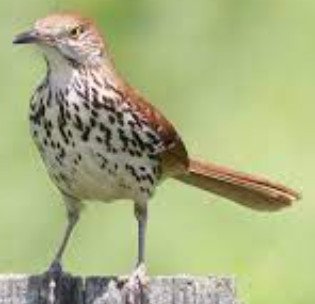
- Scientific name: Toxostoma rufum
- Lifespan: around 12 years
- Wingspan: 29-33 cm
- Native to: United States, Canada
- Size: around 23.5 to 30.5 cm
- Food or diet: insects, berries, nuts, seeds, earthworms, snails, lizards and frogs.
Brown thrashers, also known as brown thrushes or fox-colored thrushes with brown and white bodies, are mostly familiar in Long Island, New York City, the United States, Texas, Mexico, and Canada.
Their long island thrashers mostly inhabitants in woodlands, rocky mountains, dense brush, agricultural areas, and suburban areas. These species’ breeding seasons vary from region to region.
However, in the U.S., the breeding season starts in February and March, when male birds establish their territories with 2 to 10 acres surrounding them.
Thrasher birds are mostly observed alone or in pairs. These long island species do not travel high, rather they prefer low-level flying very close to the earth’s surface
20. Rose-Breasted Grosbeak
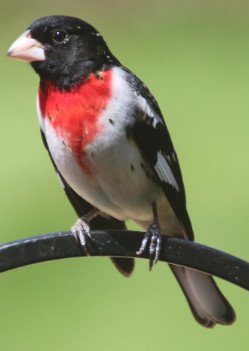
- Scientific name: Pheucticus ludovicianus
- Lifespan: around 7.3 years in the wild; 24 years in captivity
- Native to: Central America
- Size: 18 to 22 cm
- Food or Diet: insects, seeds, berries, nectar, wheat, fruits, etc.
Rose-breasted grosbeaks are small to medium-sized birds with black heads, backs, tails, and little red on their breasts.
These birds are mostly familiar in the long islands of New York City, including Central America, the Caribbean, Peru, Venezuela, Colombia, and Costa Rica. Their preferred habitats are open places and wooded areas.
Male birds usually arrive at their breeding spot early, before the female birds. After breeding seasons, both birds select and build their nests on tree branches between early May and early June.
These birds build their nests about 6 to 16.7 meters above the ground. Female birds lay 1 to 5 eggs normally 3 to 4 eggs. Their egg color is greenish to purple brownish color.
21. American Crow
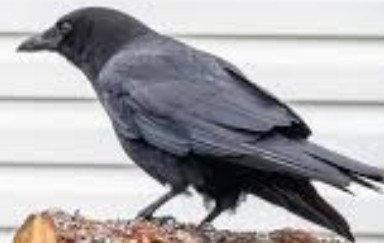
- Scientific name: Corvus brachyrhynchos
- Lifespan: 7 to 8 years
- Wingspan: 9.6 to 13.0 inches
- Native to: North America
- Size: 16 to 20 inches
- Food or Diet: Carrion, food, fruits, seeds, eggs, mice, rabbits etc.
American crows are also a large passerine bird of Long Island in New York City. Other species are local to North America, the Pacific Ocean, the Atlantic Ocean, the United States, and Canada.
These long-island birds also prefer farmlands, parks, and open woodlands for their habitat. Their nesting season usually starts early, and the eggs are incubated by early April.
Females lay 3 to 6 eggs in the nests and incubate for 18 days until the eggs hatch. These crows have an intelligence level that helps them solve puzzle games or utilize tools for their needs.
22. Northern Flicker
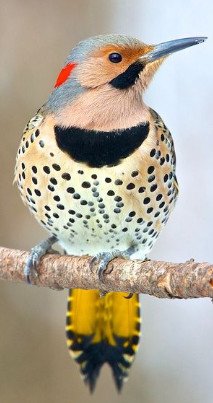
- Scientific name: Colaptes auratus
- Lifespan: almost 9 years
- Wingspan: 18 to 21 inches
- Native to: North America
- Size: 28 – 36 cm
- Food or diet: fruits, berries, insects, grapes, cherries, seeds, etc
Northern flicker birds are also known as common flickers and are widely spotted on the Long Island of New York City. These species are also associated with woodpecker bird species.
Although native to North America, they are familiar with Central America, Cuba, and the Cayman Islands.
These long island birds prefer mostly open places like parks, woodlands, yards, and edges near trees for their habitats.
Their diet contains fruits, berries, insects, grapes, cherries, seeds, etc. They eat mostly what they have found on the ground. Males and females flicker together, build their nests, and raise their young.
23. Baltimore Oriole
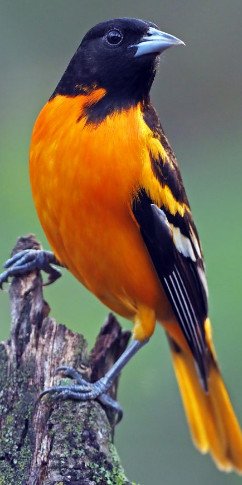
- Scientific name: Icterus galbula
- Lifespan: around 12 years in the wild; 14 years in captivity
- Wingspan: about 23–32 cm (9.1–12.6 in)
- Native to: North America
- Size: 17–22 cm (6.7–8.7 in)
- Food or Diet: fruits, insects, caterpillars, seeds, berries, etc.
Baltimore orioles are small birds very common to Long Island, New York City. Adult Long Island orioles are slightly larger than females.
Adult birds have yellow-orange lower parts with blackheads and shoulders. They have black wings with white stripes on them.
These species of oriole are familiar in North America, including the United States, South America, Central America, and the southern coasts.
However, these long island birds are very rare in the Western European region. They do not prefer deep forests; rather, they prefer wooded areas, orchards, farmlands, coffee plantations, wetlands, and leafy deciduous trees for their habitats.
Male orioles sing loud whistles with buzzing sounds to communicate with their fellow members.
24. Red-Tailed Hawk
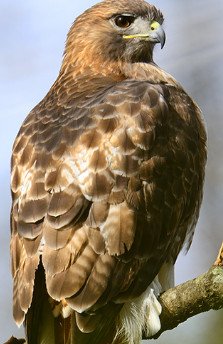
- Scientific name: Buteo jamaicensis
- Lifespan: around 10 to 12 years
- Wingspan: about 110–141 centimeters (3 ft 7 inches – 4 ft 8 inches)
- Native to: North America
- Size: 18 to 24 inches
- Food and diet: small animals, rodents, lagomorphs, reptiles, fish, invertebrates, lizards, mouse
Red-tailed Hawk birds, including the Long Island of New York State, are highly common in North America. These long island red-tailed hawks have brownish-black plumage along with a reddish-brown tail.
During their flight, these hawks often soar and flap their wings, which helps them conserve energy.
These hawk birds are mostly partial migrants, which means they travel within their range, including Canada and Alaska. These long island species prefer mixed forests, fields, woodlands, tall trees, or high bluffs for their habitats and also for their nesting and perching places.
They inhabit wetlands, mountains, grasslands, and agriculture fields as well. During their courtship performance, they dangle their legs, touch each other’s wings, or do cartwheels together.
25. Pileated Woodpecker
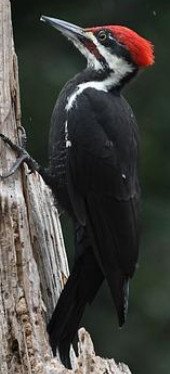
- Scientific name: Dryocopus pileatus
- Lifespan: up to 11 years
- Native to: North America
- Size: 40 to 49 cm
- Food or Diet: fruits, insects, beetles, berries, nuts, ants, spiders, snails, etc.
Pileated Woodpeckers are medium-sized woodpeckers mostly distributed in North America, including the Long Island.
Besides Long Island, they are also found in Canada, the eastern United States, and a few parts of the Pacific coast at different seasonal times.
Their preferred inhabitants are forest areas, heavily wooded parks, and brushy and shrubby areas. These long island species make large holes by drilling the dead trees or dry trees with their beaks.
Even their drilling can divide a small tree in half. By the time of April, male birds make the hole in a tree and attract their female mates.
After that, both male and female birds raise the young together in the holes. Females incubate for 12 to 16 days, after which the egg hatches. The young take 25 to 30 days to fly and leave the nests.
Conclusion
In short, this long island of New York City or State is a heavenly place for avians to visit. This place has immense richness and potential sources to fulfill every bird’s food, shelter, and nesting site requirements.
These places become havens for avian species by providing a variety of ecosystems. Similarly, places like Florida, Michigan, and Oklahoma offer diverse habitats, food resources, secure breeding spots, and nesting sites, making them attractive to avian species.

